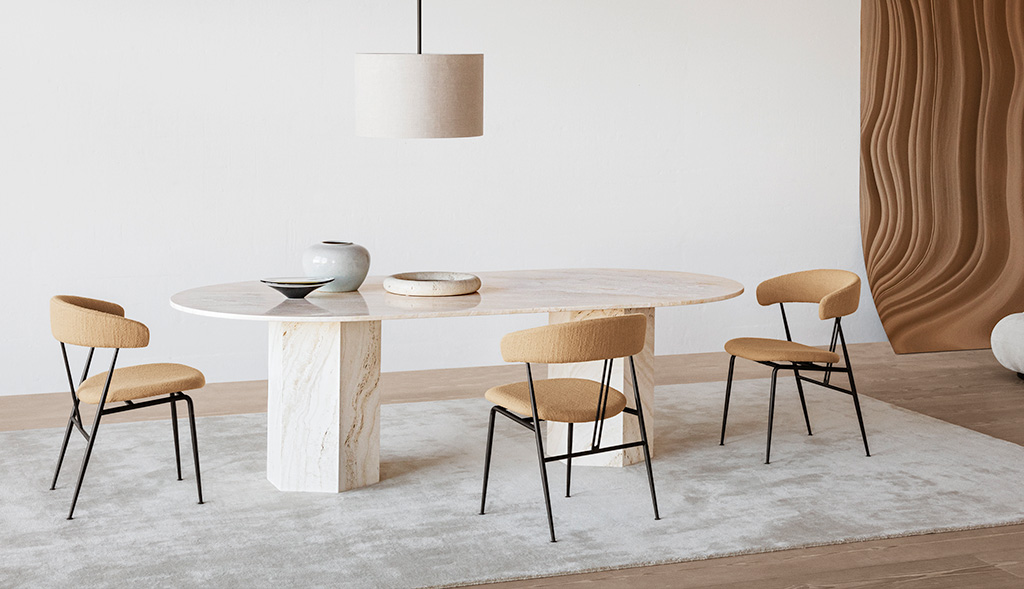The Complete Guide on How to Buy a Rug
Everything you need to consider when buying your next rug
There aren’t many items in your home that can match the decorative impact, or the ability to tie a room together quite like the perfect rug.
However, navigating the world of rug shopping can be overwhelming, and there is much to consider…but fear not! Our comprehensive guide is here to demystify the process and ensure you make a well-informed decision. From understanding different rug materials and styles to sizing and layout considerations for your room, we've got you covered.

Rug-related terms you should know about.
Before we get started, here is a helpful glossary of terms to familiarise yourself with before setting out on your rug-buying journey.
Pile
The raised surface of a textile. Pile refers to the length of the material that makes up the rug, so the higher the pile, the thicker and more plush the rug will be.
Underlay
Also known as a rug pad or carpet pad, an underlay is a thin piece of material placed beneath your rug. Its primary role is to prevent slippage and is especially useful when your rug is to be placed on a hard surface, such as a wooden floor. An underlay can also add some cushioning underfoot and even promote air circulation, which will prevent the growth of mould or mildew.
Warp and Weft
These refer to the threads that form a rug, with warp running lengthwise and weft running across.
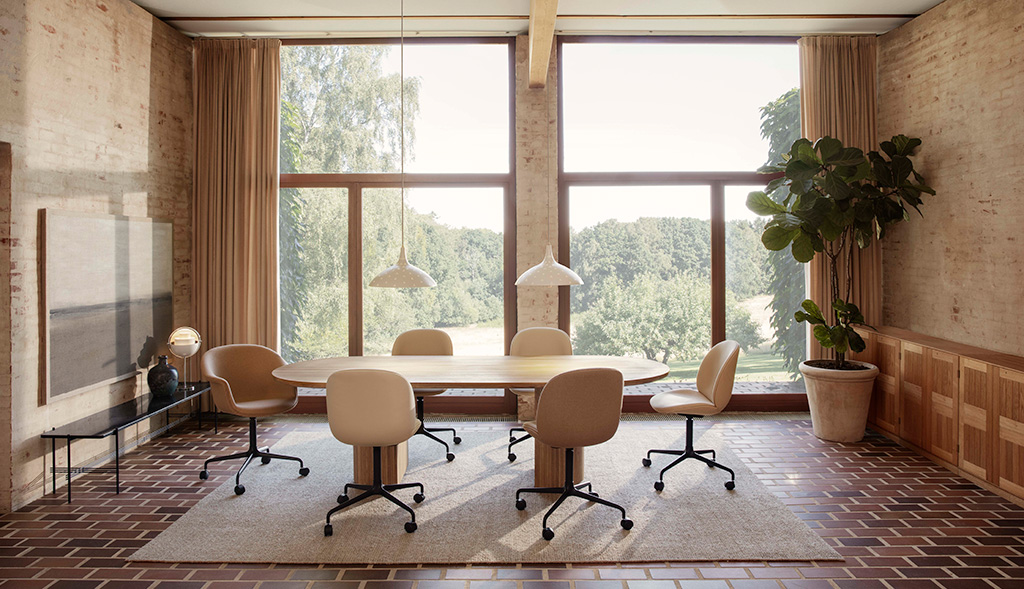
Why might you need a rug?
Practical reasons
Hardwood or tile floors are undeniably beautiful, but if you’ve got kids running around they can be at best - pretty loud underfoot, and at worst - a dangerous hazard. A high-pile rug will help overcome these issues, and should also help with loss of heat.
A rug can also be very useful in protecting your floor in high-traffic areas of the home. Scratched floorboards, broken tiles and worn-out carpets needn’t be a concern when you’ve invested in a nice hard-wearing rug.
Defining areas
Open-plan rooms have become a staple of modern living, and interior designers have plenty of tricks for sectioning off areas and creating cosy living areas within these larger spaces. Large plants and carefully placed furniture (like a sideboard or free-standing shelf) help but a rug can often do a lot of the heavy lifting for you.
We’ll talk about sizing below, but spoiler alert - a large area rug will help you here.

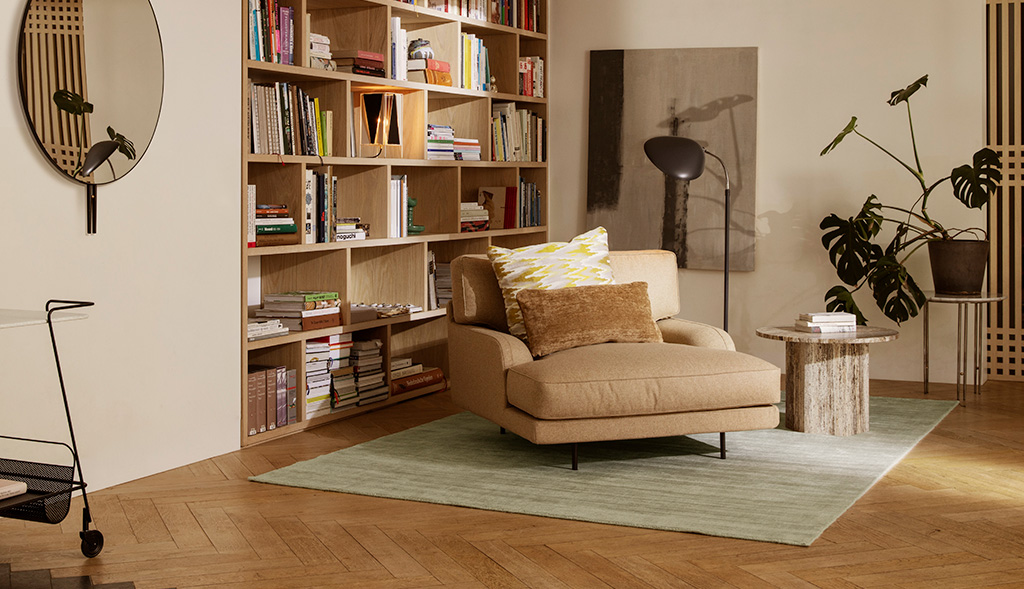
What to consider before buying a rug?
First and foremost, it’s important to consider the room your rug will live in and its purpose. Are you hoping to make a statement, or find something that unifies an aesthetic? If the rug is being put in a high-traffic area such as a hallway you’ll want to consider the material and an underlay to prevent slipping. Next, you’ll want to think about size, shape and layout — more on all of these below.
Size & Layout
Believe it or not, dimensions might be the most important consideration to make when buying a rug. For instance: if the rug is too small then you run the risk of diminishing all the effort your made when designing your room, but if it’s too big you can risk enveloping the space and overwhelming the existing features.
There are no strict rules when it comes to rug sizing but we do have some handy tips for choosing the perfect rug size for your room.
Living Room
When considering the size of the rug, we must first consider the layout of our room. Given that the focal point of most living rooms will be the sofa, we’ll use this as our guide.
If your couch is placed against a wall, try to ensure your rug covers at least the front legs, and the front legs of neighbouring armchairs.
If your sofa is placed more centrally in a room, your rug should cover the entirety of the sofa and surrounding furniture, with some floor space on all sides of the rug so that you can walk around it. This is especially impactful in an open-plan space as it’ll help you unify and section off the area.
In smaller spaces, with the correct layout, a small rug can be an option. Float your rug about 15-30cm from the front of your sofa (and armchairs) ensuring that furniture is positioned around the edges of the rug.
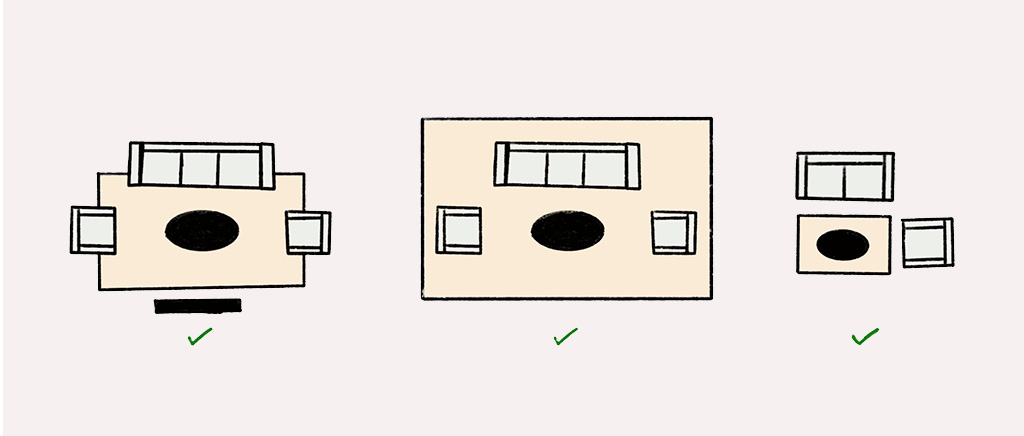
Bedroom
As with the living room, we’re going to focus our bedroom rug efforts on the focal point of the room, the bed. Whether your bedroom is carpeted or has solid flooring, the addition of a rug can create a nice break between the bed and the rest of your furniture.
We believe there are three potential options for rug placement that’ll help bring your bedroom aesthetic to the next level. You want to either cover all of your furniture (bed and side tables/bedside table), run a rectangular rug across the room around two-thirds from the bottom of the bed, or use “runners” alongside the bed.
What is a runner? A rug that is generally long an narrow, predominantly rectangular in shape.
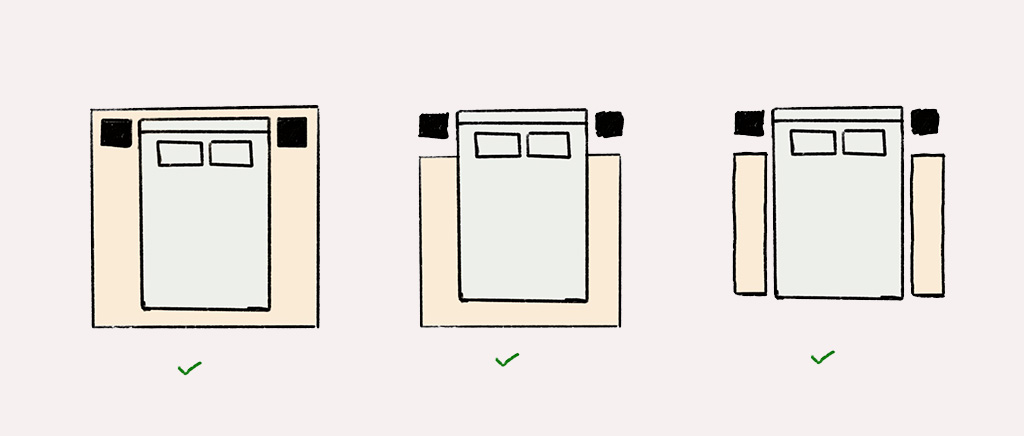
Dining Room
In our ideal dining room, the rug will cover the entirety of the table and chairs, and be large enough that even a pushed-back chair fits on the rug. Take a cue from the size and shape of your dining table - a circular rug is great with round tables (and particularly in smaller spaces) whilst a traditional, rectangular table works best when paired with a similarly shaped rug.
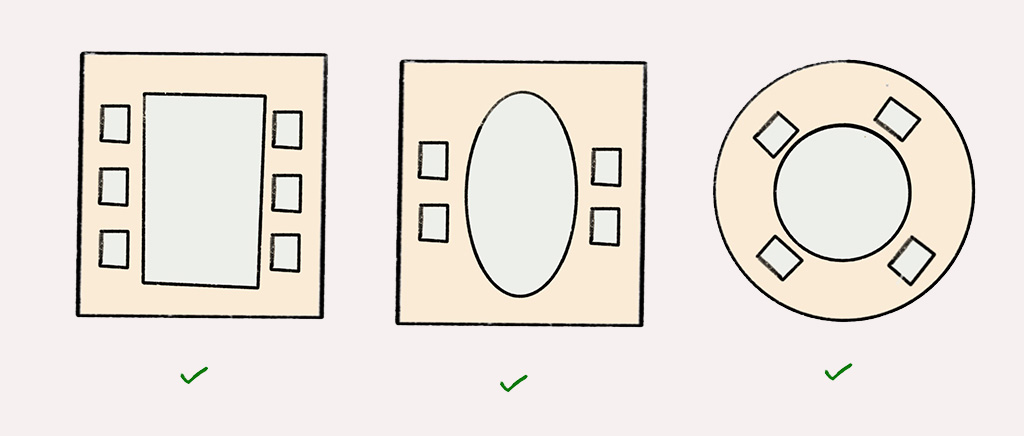
Hallway
First impressions count, right? Whether your have a round foyer or an elongated entry, the right rug can set the tone for what lies ahead. Be wary of going too big with a hallway rug - you don’t want it to feel intrusive, and in most cases you don’t want to make the space feel smaller.
Bear in mind that this is a high-traffic area so you’ll need a durable rug (think something low pile) and a solid underlay.
Top tip for measuring your room / space
Use some painter’s tape / masking tape etc and outline the rug dimensions in the location you require it, then move your furniture back into place to see whether it fits.


Materials
Once you’ve decided upon the size, shape and layout of your rug it’s time to take a step back and consider again the rugs application. The material a rug is made from will determine its suitability for your space, so it’s important to choose a material that has the qualities that suit your needs.
Wool
Perfect for creating a warm and comforting space, a wool rug will generally be durable and resilient, making it ideal for living spaces and family homes.
Cotton
Durable and soft, cotton rugs often contain tightly woven designs and patterns. They tend to blend well with other materials.
Hemp
Hemp is the fastest growing plant on earth so it marks pretty high on the sustainability index. It’s also naturally anti-bacterial which is ideal for a rug since it’ll be resistant to mould and mildew growth.
Jute
The golden, natural aesthetic of jute lends itself perfectly to so many interior applications. Whether you’re going for a Farmhouse or Nordic-style interior, Jute can be the answer. An incredibly strong natural fibre, Jute has both insulating and antistatic properties, and it’s also 100% biodegradable and recyclable.

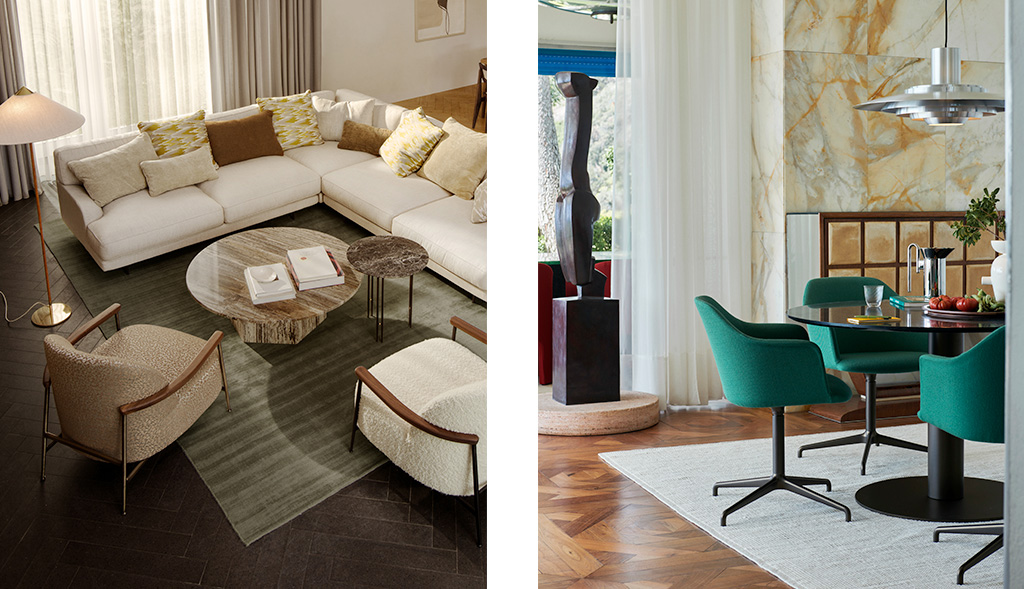
Care and cleaning
It is inevitable that at some point you’ll find yourself having to deal with a soiled rug, so it’s worth taking a look at the specific care instructions offered by the rug manufacturer - cleaning will depend heavily on the material and construction of your rug. When it comes to staining we often recommend that you contact a cleaning specialist rather than tackling it yourself.
However, when it comes to maintenance there are a few rules that apply to all new rugs.
- Lightly vacuuming a wool rug on a semi-regular basis (you don’t want to overdo it and risk undue shedding, especially on a rug with a longer or looser pile) will keep on top of the natural shedding process and keep your rug looking fresh.
- An effective way to routinely clean your rug is to simply beat it with a wooden pole to loosen any ground in dirt before giving it a light vacuum.
- Turning your rug often will ensure even wear and keep it moth free.
- Never pull on loose threads. If you do spot a loose thread on your new rug, always ensure to snip it off at the base as this will prevent it from unravelling.
Rug Buying FAQ
Feeling inspired? Explore our selection of contemporary rugs here.
Time for more? At Home with Patricia Perales Garcia | Design Icon : The Saarinen Tulip Table | At Home With Connie Barton
-
Buying GuidesA Glossary Of Lighting Terminology.Read More
As the nights draw in and the evenings get darker we take a look at some of the intricacies of the terminology associated with lighting design. Squirrelled away in the minutiae of the descriptions of some of our most popular...
-
Buying GuidesThe Complete Guide to Buying Your Dream SofaRead More
Choosing the perfect sofa is more than just selecting a piece of furniture; it's about curating the heart of your home. From lazy Sunday afternoons to entertaining guests, your sofa sets the tone for countless memories. Yet, navigating the vast...
